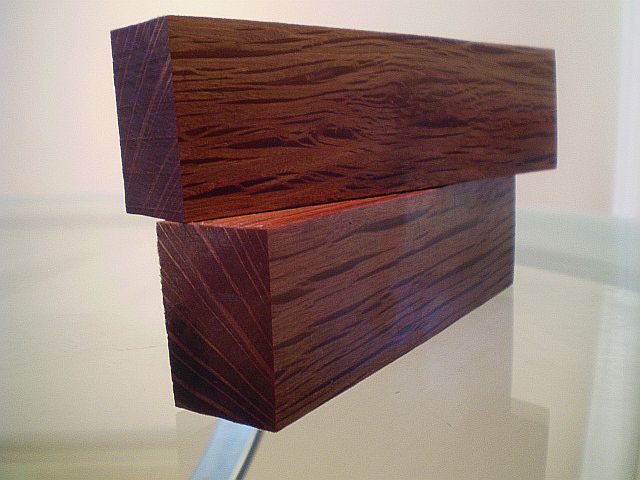By now you probably know that wood comes in diverse colors, sizes, and at different ratings of strength. One important feature to always consider when selecting a wood species for a DIY project is how hard it is. If you don’t want to think too hard, you can always opt to pick one from the hardwood display at any hardware store. Have you ever wondered how you can know the hardness of wood? Or what could be the hardest wood out there? We’ve got the answer here. In this feature, you’ll get to learn about what is the hardest wood in the world, and a few other popular hardwood species that will break the scale.
Measuring Wood Hardness
First, you might be wondering how the hardness of wood is even measured. Weighing it or knocking it up does not offer much accuracy, hence in 1906, Austrian Wood researcher Gabriel Janka developed the standard test to prove this, now in his namesake. The Janka Hardness Test determines the wood hardness by measuring the amount of force needed to penetrate halfway through the thickness of the wood by using a 444-inch steel ball. The unit of measurement is in Newtons (N) or pounds-force (lbf). Knowing the hardness of wood on the Janka scale is essential when planning your own woodwork project.
What is the Hardest Wood in the World?
The highest recorded Janka hardness is 22,500 N or 5,060 lbf. To put you in perspective, the hardest commercially sold wood is Pecan Hickory, measuring at 8,096 N or 1820 lbf. The ax-breaking rating of 5,060 lbf belongs to no other than the Australian Buloke (or Bulloak), scientific name Allocasuarina luehmannii.
About the Australian Buloke (Allocasuarina luehmannii)
The Australian Buloke is a native wood species, thriving in small woodlands around the southeast region of Australia. They are characterized by the heartwood with a reddish-brown color, while its sapwood has a yellowish tint, with cones and twisted branchlets that bear yellow-green flowers during spring. The evergreen ironwood tree is a favorite nesting spot for birds, especially for the red-tailed black-cockatoo, where most bird watchers and researchers have observed the endangered animal reside. The first documentation of Allocasuarina luehmannii was recorded by Botanist R.T. Baker in 1900.
During the Victorian Era in the 20th century, most bulokes were chopped down to make way for farms, pastures, and manufacturing plants. The tree can take 100 years to fully grow at 15 to 20 meters (between 33 to 66 ft), and 15 years for it to reach a moderate height as a sproutling. Hence, it has become a threatened wood species now that it is few in number and difficult to reproduce. The Australian Buloke is currently protected under the law for its value to indigenous biodiversity. National parks and private landowners do their part to protect any areas where the trees are still planted. Some of them are found along the Great Dividing Range by the Murray-Darling Basin, and a few other species being conserved in New South Wales, South Australia, and Victoria.
Applications and Uses
Though Allocasuarina luehmannii is no longer commercially sold today, many sought it back then knowing how dense and durable the material is. Buloke was not a popular woodworking medium, with many crafters saying that it can easily make lumber yards and sawmills go blunt.
Before its conservation, Australian Buloke was used to produce expensive wood sculptures, taking a hack saw to create even the most prominent details. It was also used for making knife handles, fine furniture, and hardwood flooring. Many also prefer it as fuel for burning up to high temperatures and storing heat for long periods of time.
Bulloak can now only be purchased in small wood blocks within Australia only. While some think it may be ideal for building rafts, boats, and the interior of submarines, this is impossible. In fact, many ironwood species are so dense that they cannot float on water.
More Common Hardwood Species
If you have been looking for hardwood species that you can easily purchase from the market, here are some of the toughest trees that won’t hurt your tools:
- African Padauk, 1725 lbf.
- Wenge, 1630 lbf.
- Hard Maple, 1450 lbf.
- Australian Cypress, 1375 lbf.
- White Oak, 1360 lbf.
Conclusion
So, what is the hardest wood in the world? The Australian Buloke or the Allocasuarina luehmannii has become a prized possession to the indigenous woodlands of Australia. A rare species, it is named to be the hardest wood in the world to date, measuring at 5,600 lbf on the Janka scale. Formerly used for fuel, crafting sculptures, furniture, flooring, and knife handles, the tree is now under conservation.
As an ironwood tree, its density cannot stay afloat on water and can take up to 100 years to reach its full growth. You can still use commercially sold hardwood species for personal use, many of them being safe for most handheld woodworking tools.

Leave a Reply